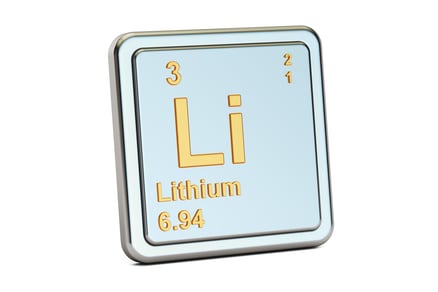
There is more than one way to power an electric forklift. One of the most important things to keep in mind when upgrading your forklift fleet power solutions is that the way you’ve been doing things may not be the ideal approach going forward.
The perfect type of battery for your forklift power requirements will depend on a number of factors, ranging from the amount of work handled by your vehicles on an average day to the number of forklifts you operate and the conditions on the warehouse floor.
Today, the question of correct technology often comes down to traditional lead acid batteries vs. new versions, with lithium ion forklift battery systems leading the way. While lead acid battery technology is entrenched, alternatives are on the rise. Your decision will set the course for the next phase of your operations.
Of course, changing your approach to forklift battery use isn't as easy as flipping a switch, and the choice isn't always as binary as it appears. By taking a close look at your current solutions, your needs and the options on offer, you can figure out an answer to the forklift power riddle, one tailored to your organization and promising real improvement.
Solving operational issues: Time for lithium ion forklift batteries?
One of the first things to understand when comparing and contrasting battery technologies is that changing the nature of your batteries is not a cure-all. Faults with your current system may not be because it uses lead acid batteries. Changing to Li ion batteries might not immediately revolutionize your material handling success.
Consider a few of the issues that commonly come up when dealing with forklift power solutions:
- Desire to use fewer batteries: Operating a large number of lead acid batteries in a battery room can come with overhead costs and operational complexities. If you run a fleet with high usage hours, you may be dealing with these realities — and hoping to change them to a more streamlined system.
- Need to replace aging batteries: Assets inevitably wear down over time, especially if there have historically been gaps in maintenance, upkeep or charging. When it's time to replace these batteries at the end of their service life, you may need to ask if there is something different you can do this time around.
- Hope to eliminate processes such as battery watering: Traditional lead acid batteries require careful management. Charging, watering, swapping and more must be carried out according to struct procedures to get results and cut risk. Would lithium ion batteries solve these issues?
When seeking resolutions, it's natural to see lithium ion batteries as the answer. After all, this new technology promises an end to the lead acid era and the headaches that come along.
There are two caveats, however, which you will have to consider.
- First, lithium ion battery use comes with its own set of limitations and challenges. Your material handling personnel will still have to observe best practices to make sure battery operations are safe and productive.
- Second, it’s possible that the best solution for your company is still based in lead acid battery technology. Perhaps what you really need is a new operational style and technology setup designed, implemented and potentially even operated day-to-day by experts.
This approach to lithium ion technology shouldn't necessarily scare you away from making a change. Considering all options is simply an important part of the process of revising your forklift battery strategy. Your ultimate goal should be to emerge with the best possible power solution for your material handling needs, whatever technology you end up using.
Side by side: Lithium ion batteries and traditional lead acid batteries
Once you've thought about your objectives for replacing your forklift battery solution, it's time to consider the technologies on offer. Lithium ion batteries have won attention in recent years due to their promising tech specs. Granted, some of the hype may have been overstated — these batteries don't necessarily represent a greener option than other types, which are just as recyclable, or even more so — but the differences are real and worth studying.
Lithium ion batteries can deliver the following capabilities for your forklift fleet:
- A long usable life span: Lithium ion batteries are capable of running for over 2,500 life cycles
- Extremely fast charging capability: Companies seeking to switch away from battery swapping models and battery rooms will appreciate lithium ion charge times
- Low need for maintenance: Hands-on maintenance is less commonly needed with Li ion batteries than legacy technologies
- Energy efficiency and flexibility: If your business is seeking to welcome a technology with lower energy consumption needs, lithium ion batteries are a leading option
The specifications for traditional lead acid batteries show how these cells differ, making them suitable for some circumstances:
- Medium life cycle and circular economy: Lead acid battery assets tend to last for 1,500 cycles. While this is shorter than for Li ion batteries, lead acid cells are fully recyclable
- Opportunity charging or swapping capability: Organizations can either embrace the battery room charging model or potentially investigate opportunity charging, where batteries are powered up during breaks for no swapping
- Maintenance required: In contrast to newer technology options, it is normal for technicians to perform maintenance on lead acid batteries
- Familiarity and reliability: Since lead acid batteries are the industry standards, your team will not have to learn new best practices to operate them
As with any operational decision affecting your logistics performance, your choice of battery solution should not be made on a side-by-side technology comparison alone. Rather, you should consider the traits of battery options in the context of your material handling needs and unique environment.
Overcoming potential pitfalls: Lithium ion forklift battery best practices
The issues with managing lithium ion batteries should be familiar to any company managing other battery technologies, though the areas of focus shift a little when considering this new option. In all cases, trained experts aware of industry best practices are essential to the success of the program.
The following are a few concepts that become especially important when introducing lithium ion technology to your warehouse:
- Observing battery charging best practices: Battery charging is a major area of importance no matter what type of technology your company is using. When working with lithium ion cells, this has a specific focus: preventing thermal runaway and the safety risks that can come with an overheating battery. Monitoring is essential.
- Creating a recycling solution: Despite their reputation for containing recyclable components, lithium ion batteries aren’t part of a circular economy system the way lead acid batteries are. Your personnel must have a recycling and disposal plan in mind to avoid creating environmental risk with discarded cells.
- Implementing data-driven practices: Using data to create ideal efficient conditions, from both speed and cost perspectives, is a promising goal for a new battery solution. When using lithium ion batteries, you have plenty of opportunities to collect and act on performance data from the cells, provided the relevant personnel are familiar with the technology and using it correctly.
Ideally, revamping your forklift battery deployment will yield better outcomes all around, including less downtime on the floor for greater productivity, increased asset life span for better total cost of ownership and more strategic operations in general. Getting to this goal through a lithium ion deployment is possible with effort and preparation.
Material handling and battery selection: Unique solutions for your company
How do you ensure your next battery deployment is actively pushing your operations in the right direction? This process begins with an honest appraisal of your current system and your operational goals. In short, you need to start with an operational and power assessment.
Once you gather the data on your current solutions, you can start to formulate a response.With an expert partner such as Concentric on your side, you can weigh the relative value of new deployments, which may involve a switch to lithium ion power or continued, refreshed use of lead acid battery cells.
The actual management of those batteries can be the real difference-maker, and that could take a few forms:
- Purchasing equipment means simply paying for new batteries and charging solutions and running them with your in-house team. If you have experts on staff and/or a small forklift fleet that is easy to manage, with under 10 vehicles, this may be the simplest option.
- Implementing a custom solution involves turning the design decisions over to Concentric's team of expert consultants and technicians as part of the FleetPOWER™ program. The finished product will have the RAAMS® monitoring solution, giving you real-time insights into battery usage.
- Switching to managed power solutions is the way to turn all your power needs, from asset selection to everyday upkeep, into a simple operational expense and put it in the hands of experts. This is the fully featured GuaranteedPOWER® option, especially suitable for companies with large vehicle fleets and multiple shifts.
Any of these options may be best matched with lithium ion batteries, traditional lead acid batteries or other alternative methods such as hydrogen fuel cells and thin plate pure lead cells.
The right technology is the one that will get your company the best possible results. Request a power assessment today to find out what that means for you.


